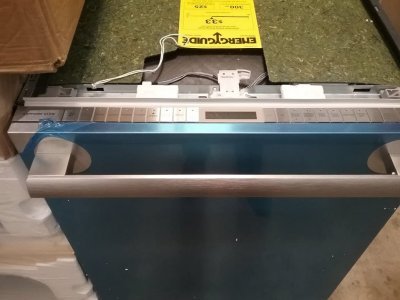If you’re experiencing drainage issues with your dishwasher, a faulty drain pump could be the culprit. The drain pump is responsible for removing the wastewater from the dishwasher after each cycle. To determine whether the drain pump is working properly, you can perform a simple test using an ohmmeter. In this article, we will guide you through the process of testing a dishwasher drain pump with an ohmmeter, step by step.
A dishwasher drain pump plays a vital role in ensuring proper drainage of wastewater from your dishwasher. Over time, the drain pump may develop faults that can lead to drainage problems. By testing the drain pump using an ohmmeter, you can determine whether it is functioning correctly or if it requires replacement.
Table of Contents
Understanding the Dishwasher Drain Pump
The dishwasher drain pump is an electrical component that is responsible for expelling wastewater from the dishwasher. It typically consists of an impeller, which forces the water through the drain hose and out of the appliance. If the drain pump is faulty, it may not be able to pump out the water effectively, resulting in standing water at the bottom of the dishwasher.
Safety Precautions
Before performing any tests or repairs on your dishwasher, it is crucial to ensure your safety. Make sure to follow these safety precautions:
- Disconnect the dishwasher from its power source to avoid electrical shock.
- Use protective gloves and safety glasses to protect your hands and eyes from any potential hazards.
- Read the manufacturer’s manual for specific safety instructions related to your dishwasher model.
Tools and Materials Required
To test the dishwasher drain pump, you will need the following tools and materials:

- Ohmmeter: Used to measure electrical resistance.
- Screwdriver: To remove the access panel and other components if necessary.
- Multimeter: If your ohmmeter does not have a continuity test function, you can use a multimeter.
Step 1: Disconnecting the Power
Safety should always be the top priority when working with electrical appliances. Begin by disconnecting the power supply to the dishwasher. Locate the circuit breaker or unplug the dishwasher from the power outlet.
Step 2: Accessing the Drain Pump
The drain pump is usually located at the bottom of the dishwasher, behind an access panel. Remove the screws or clips securing the panel and set it aside. Take note of the position of the drain pump for easier reinstallation later.
Step 3: Removing the Drain Pump
Once you have accessed the drain pump, carefully disconnect the electrical connections and hoses attached to it. Depending on your dishwasher model, you may need to remove additional components to gain full access to the drain pump. Refer to your dishwasher’s manual for specific instructions.
Step 4: Testing the Drain Pump with an Ohmmeter
Now it’s time to test the drain pump using an ohmmeter. Set the ohmmeter to the continuity test mode or the lowest resistance setting. Place the ohmmeter probes on the terminals of the drain pump. If the drain pump is working correctly, the ohmmeter should display a low resistance reading, indicating that the electrical circuit is closed.
Step 5: Interpreting the Ohmmeter Reading
When testing the drain pump, you should get a low resistance reading if the pump is functioning correctly. If the ohmmeter reading shows infinite resistance (open circuit), it means the drain pump is faulty and needs to be replaced.
Step 6: Replacing the Drain Pump (If Necessary)
If the drain pump fails the ohmmeter test, it is likely defective and should be replaced. Consult your dishwasher’s manual or seek professional assistance to ensure the correct replacement part is obtained. Follow the manufacturer’s instructions to install the new drain pump and reassemble the dishwasher.

Can I test the dishwasher drain pump without an ohmmeter?
While an ohmmeter is the most accurate tool for testing the drain pump, you can also look for other signs of a faulty pump, such as unusual noises or failure to drain properly.
What if my dishwasher doesn’t have an access panel?
In some dishwasher models, the drain pump may be located underneath the dishwasher. You may need to remove the entire dishwasher from its installation to access and test the drain pump.
Can I repair the drain pump instead of replacing it?
In some cases, minor issues like clogs or debris blockages can be resolved by cleaning or repairing the drain pump. However, if the pump is extensively damaged or worn out, replacement is usually the best solution.
Are all dishwasher drain pumps the same?
Dishwasher drain pumps can vary depending on the make and model of the appliance. It’s essential to consult your dishwasher’s manual or contact the manufacturer to ensure compatibility when purchasing a replacement drain pump.
Is it necessary to hire a professional to replace the drain pump?
Replacing the drain pump can be a relatively simple task, but if you’re unsure or uncomfortable with the process, it’s always advisable to seek the assistance of a professional technician to avoid any further complications.
Conclusion
Testing a dishwasher drain pump with an ohmmeter is a straightforward process that allows you to diagnose and identify potential issues with the pump. By following the steps outlined in this article, you can determine whether the drain pump is working properly or needs replacement. Remember to prioritize safety and consult professional help if needed.


2 thoughts on “How to Test a Dishwasher Drain Pump with an Ohmmeter”
Comments are closed.